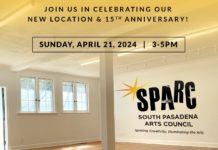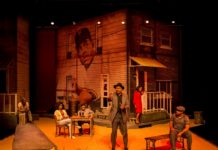
An important milestone came and went July 19, 2019. It was the day, twenty years ago, when Judge Dean D. Pregerson of the US District Court for the Central District of California issued his sweeping, 50-plus page ruling that prevented Caltrans’ construction of the 710 freeway extension through South Pasadena, Pasadena and El Sereno. Specifically, the ruling enjoined the use of federal or state money for the construction or acquisition of land needed for the project.
But for that ruling, “the freeway would have been built,” says long-time South Pasadena resident Steven Friedman, who was on the core team of lawyers who secured the decision. “South Pasadena as we know and love it would have ceased to exist.”
The project would have “destroyed communities and neighborhoods in a wide swath of east Los Angeles county,” Paul Edmondson, President and CEO of the National Trust for Historic Preservation, told the South Pasadenan News.
“It’s important to remember the magnitude of this destructive proposal,” added Betsy Merritt, another core member of the legal team. It would have “demolished almost 1,000 homes and 6,000 trees in a six-mile area, displacing 2,400 people and cutting through the heart of four National Register historic districts while skirting the boundaries of two others.
“The below-grade freeway would have included six cut-and-cover tunnels, and dozens of historic homes would have been temporarily stored and then relocated on top of the tunnel lids,” she said. It would have cost today’s equivalent of $2 billion. But the government’s own studies showed when the project was done, “traffic in the corridor would move less than one mile an hour faster than if no freeway were built at all.”
The 710 extension was so bad that even Adriana Gianturco, the director of Caltrans from 1976 to 1983, later said she was against it, calling it both “disastrous” and “extremely damaging.”
The City of South Pasadena, Merritt said, supported by a “broad coalition of freeway fighters…was determined to prevent the destruction of its core with a second freeway that would have cut the city into four pieces.”
The ruling, a preliminary injunction, was not a final decision on the merits of the plaintiffs’ case. Rather, it was an assessment by the judge that if the case went to hearing, the plaintiffs would likely win. But a final ruling could take years. Were the defendants allowed in the meantime to go forward with construction, irreparable damage would’ve been done to the city. So Pregerson issued the injunction.
Besides Friedman and Merritt, the core legal team included Roger Moore and Jan Chatten-Brown. The team was led by South Pasadena’s special counsel, the legendary land and water attorney Antonio Rossmann.
The plaintiffs were the City of South Pasadena, National Trust for Historic Preservation, Sierra Club, California Preservation Foundation, Los Angeles Conservancy, Pasadena Heritage, South Pasadena Preservation Foundation, and the South Pasadena Unified School District.
The defendants: Caltrans and the Federal Highway Administration (FHWA).
The challenge was to the record of decision (ROD)—the final document in the defendants’ National Environmental Protection Act review. Over and over again, Pregerson wrote that the plaintiffs demonstrated a strong likelihood of prevailing in their allegations that the ROD violated provisions of the Clean Air Act, National Environmental Protection Act and historical resource protections under Section 4(f) of the Department of Transportation Act. They abused their discretion and violated commitments they’d made. South Pasadena fought to require the defendants to consider a “no-build option” which the judge said appeared to be “prudent and feasible.” In rejecting it, Pregerson said the defendants acted arbitrarily, capriciously and without rigor or objectivity.
Nor did they consider the long-term air quality impacts of traffic.
“The plaintiffs have made a showing that the defendants did not act in accordance with the law,” the judge concluded. He said they “raised serious questions going to the merits” of many issues, including the defendants’ approach to public hearings.
Since 1999, Pregerson’s ruling has been cited in published court decisions and in a half dozen law review articles. It’s frequently mentioned in briefs and motions filed in federal court, and in numerous federal regulations. Rossmann himself used it in subsequent litigation, including a 2014 case in which he won another preliminary injunction on behalf of the City of Berkeley in its battle to save a historic post office.
Merritt recalls that the ROD “was the culmination of an extraordinary administrative process, in which the Environmental Protection Agency, the Interior Department and the Advisory Council on Historic Preservation (ACHP) all raised formal objections. [The ACHP] exercised its rarely-used authority to oppose the project (on three separate occasions, actually), and even took the unprecedented step of sending its objections directly to the President of the United States in 1998.”
In January 1993, she recalled, ACHP had “thwarted an effort by Secretary of Transportation to ram through final approval of the project in the waning days of the Bush Administration by referring the inter-agency dispute to the Council on Environmental Quality (CEQ). In turn, CEQ asked the Secretary of Transportation to evaluate [the] ‘Low Build’ Alternative”—the use of use of existing arterial surface streets rather than a freeway to improve the flow of traffic—not dissimilar to the transportation system management/transportation demand management option that Caltrans ultimately adopted 25 years later.
“The objections raised by the three federal agencies did not have the effect of ‘vetoing’ the freeway project, but they were highly influential in the court’s decision to issue the injunction,” Merritt explained. “It’s a useful reminder of what a powerful statement it is when one federal agency is willing to say to another, ‘We think this project is wrong.’”
The injunction came 26 years after Judge E. Avery Crary approved a 1973 stipulation between the parties for a preliminary injunction prohibiting 710 extension activities pending completion of environmental review under the then newly minted California Environmental Quality Act (CEQA) and National Environmental Protection Act (NEPA).
Benjamin Salvarty, a Caltrans attorney at the time, has said the agency agreed to the 1973 injunction because it knew it had done so little preparatory environmental work that if the case went to hearing, “we would have lost.”
Friedman says the review contemplated by the stipulation was expected to take one or two years, but the injunction stayed in place for 25 years, until April, 1998 when FHWA at last finalized its environmental ROD.
Within weeks, South Pasadena and the other plaintiffs filed a new challenge.
“After multiple rounds of briefing and oral argument over the next year,” Pregerson issued his massive 1999 injunction, which also required that the defendants maintain properties they purchased in the proposed 710-extension corridor in good repair, something they had also promised but failed to do under the earlier injunction.
“In the ensuing years, as a result of a continuing multi-pronged legislative, political, legal, and grassroots effort, the basis of the approval of the 710 extension unraveled,” Friedman continued. FHWA issued an environmental reevaluation in December 2003, which suspended further activities and funding to advance the project based on the 1998 ROD.” That meant a new ROD would have to be issued were the project to proceed. In 2004, Caltrans too withdrew its formal approval.
“There was no shortage of dramatic developments leading up to this milestone decision” Merritt also recalled. “One memorable moment came in 1995, when the Keeper of the National Register officially recognized a working-class Latino neighborhood in El Sereno as being eligible for the National Register of Historic Places, despite objections from CalTrans. The National Register ruling, together with an ‘environmental justice’ lawsuit filed by the NAACP Legal Defense Fund, led to the realignment and reconfiguration of the proposed freeway. The cut-and-cover tunnels and below-grade alignment, which were originally limited to the affluent white neighborhoods in the corridor, were added to the El Sereno portion of the proposal as well.”
The ruling set a precedent that National Register significance for residential developments should not be limited to those that are “strictly homogeneous in design (only grand estates, Craftsmen designs or certain income levels),” but can include diverse middle- and working-class neighborhoods as well. This recognition – that the National Register is not just for the mansions of wealthy white people – really helped galvanize the pride of the El Sereno community and their opposition to the freeway.”




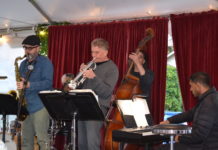

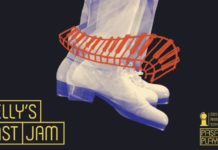

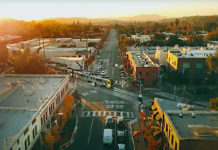




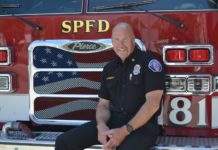




.png)







